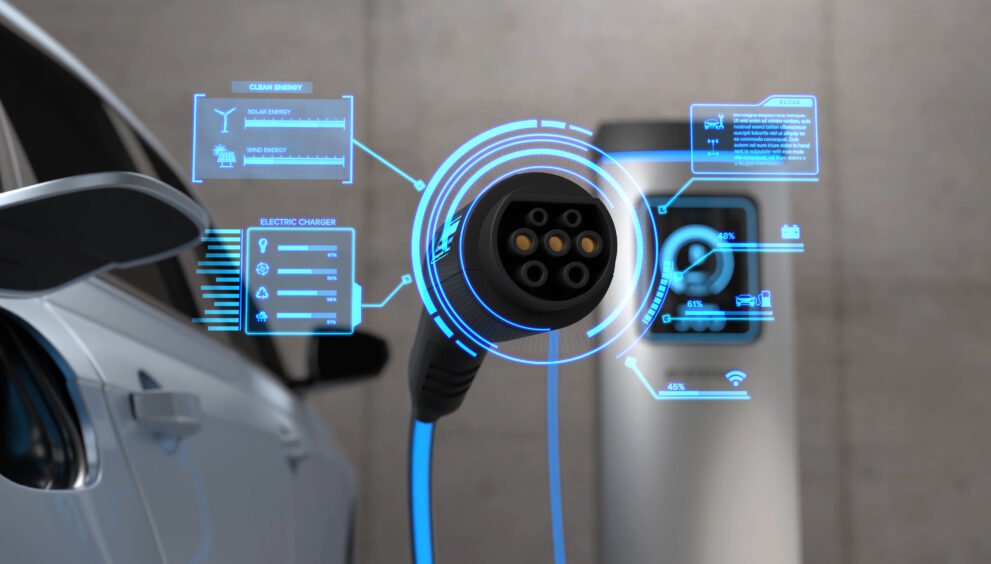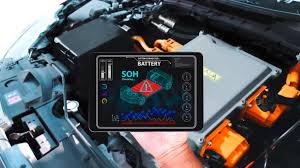DIY Electric Car Conversion Kit: Transform Your Ride

Are you looking to transform your vehicle into a more environmentally friendly ride? Converting your car to electric power is an innovative solution that not only reduces your carbon footprint but also offers a cost-effective alternative to purchasing a new vehicle.

You can achieve this transformation with a DIY electric car conversion kit, which provides all the necessary components to make the switch. The process involves replacing your vehicle’s traditional engine with an electric motor, thereby significantly reducing emissions and operating costs.
By choosing to convert your vehicle, you’re not only contributing to a cleaner environment but also gaining the satisfaction of having undertaken a challenging project. The electric vehicle conversion process is an exciting journey that combines technology, innovation, and sustainability.
Key Takeaways
- Transform your vehicle into an environmentally friendly ride.
- Reduce your carbon footprint and operating costs.
- Utilize a DIY kit for a cost-effective conversion process.
- Contribute to a cleaner environment by reducing emissions.
- Embark on a challenging yet rewarding project.
Understanding Electric Vehicle Conversion Benefits
The benefits of converting your car to electric are multifaceted, ranging from environmental advantages to cost savings. As you explore the world of electric vehicle (EV) conversions, you’ll discover how this transformation can positively impact both the planet and your driving experience.
Environmental Impact and Carbon Footprint Reduction
One of the most significant advantages of EV conversion is the reduction in carbon footprint. By switching from a traditional internal combustion engine to an electric motor, you can significantly decrease your vehicle’s emissions, contributing to a cleaner environment. Electric vehicles produce zero tailpipe emissions, making them an attractive option for those looking to minimize their environmental impact.
Long-term Cost Savings on Fuel and Maintenance
Converting to an electric vehicle can also lead to substantial long-term savings. Electric vehicles are generally cheaper to run, with lower fuel costs (electricity is often less expensive than gasoline) and reduced maintenance needs due to fewer moving parts in the electric drivetrain. This means you can enjoy your vehicle while saving money over time.
Performance Advantages of Electric Drivetrains
Electric drivetrains offer several performance benefits, including instant torque and smoother acceleration. This results in a more responsive and enjoyable driving experience. Additionally, electric vehicles tend to have a lower center of gravity due to the placement of batteries, which can improve handling and stability.
By understanding these benefits, you can make an informed decision about converting your vehicle to electric. Whether it’s for environmental reasons, cost savings, or the thrill of driving an electric vehicle, the advantages are clear.
Choosing the Right DIY Electric Car Conversion Kit
When embarking on a DIY electric car conversion, selecting the appropriate kit is crucial for a successful transformation. The process involves several key considerations to ensure that your vehicle is converted efficiently and effectively.
Complete Conversion Systems vs. Component-Based Kits
You have two primary options when it comes to DIY electric car conversion kits: complete conversion systems and component-based kits. Complete conversion systems offer a comprehensive solution, including all necessary components and instructions, making them ideal for those new to electric vehicle conversions. On the other hand, component-based kits require you to source and integrate individual parts, offering more flexibility but also demanding more technical expertise.
- Complete conversion systems are user-friendly and include everything needed for the conversion.
- Component-based kits offer flexibility and customization but require more technical knowledge.
Motor and Controller Options for Different Vehicle Types
The choice of motor and controller is critical in an electric vehicle conversion. Different vehicle types require different motor specifications to optimize performance. For instance, a heavier vehicle may require a more powerful motor, while a lighter vehicle might be adequately served by a less powerful one. Controllers regulate the flow of energy between the battery and the motor, and their compatibility with both is essential.
Battery Technologies and Range Considerations
Battery technology is a pivotal aspect of electric vehicle conversion, directly impacting the vehicle’s range and performance. Lithium-ion batteries are popular due to their high energy density and relatively long lifespan. When choosing a battery, consider your driving habits and the range you need. A thorough analysis of your daily driving requirements will help in selecting the appropriate battery capacity.
- Assess your daily driving needs to determine the required range.
- Choose a battery technology that balances range, cost, and lifespan.
Compatibility with Your Vehicle Make and Model
Ensuring that the conversion kit is compatible with your vehicle’s make and model is vital. This includes considering the space available for batteries, the mounting of the motor, and the integration with the vehicle’s existing systems. Compatibility ensures a smoother conversion process and optimal performance of the converted vehicle.
By carefully evaluating these factors and choosing the right DIY electric car conversion kit, you can achieve a successful homemade electric car conversion that meets your needs and enhances your driving experience.
Step-by-Step EV Conversion Installation Guide
Embarking on a DIY electric car conversion journey requires careful planning and execution. This guide will walk you through the critical steps involved in transforming your conventional vehicle into an electric car.
Pre-Conversion Planning and Preparation
Before starting the conversion process, it’s essential to assess your vehicle and prepare your workshop. This stage is crucial for a successful DIY EV conversion.
Vehicle Assessment and Weight Distribution Calculations
Evaluate your vehicle’s condition, noting its weight distribution and any potential structural weaknesses. This assessment will help you determine the best placement for the electric motor and batteries.
Required Tools and Workshop Safety Setup
Gather all necessary tools and ensure your workshop is safely set up for the conversion process. This includes having proper ventilation, safety gear, and a well-organized workspace.
Conversion Process Walkthrough
The conversion process involves several key steps, from removing the internal combustion engine to installing the electric motor and battery system.
Removing the Internal Combustion Engine Components
Carefully remove the engine, transmission, and associated components, making way for the electric motor and other EV-specific parts.
Adapting and Installing the Electric Motor
Adapt the electric motor to your vehicle’s drivetrain, ensuring a secure and efficient installation. This step is critical for the performance and reliability of your DIY EV conversion.
Battery Placement and Management System Installation
Strategically place the batteries to optimize weight distribution and install a battery management system to monitor and control the battery’s state of charge.
Electrical System Integration
Integrating the electrical system is a complex but crucial step in the EV conversion process.
High-Voltage and Low-Voltage Wiring
Install high-voltage wiring for the electric motor and battery system, as well as low-voltage wiring for accessories and controls. Ensure all wiring is secure and meets safety standards.
Dashboard and Control System Setup
Set up the dashboard and control systems to monitor and control your EV’s performance, including the state of charge, speed, and other vital parameters.

To help you better understand the conversion process, here’s a summary of the key components and their estimated costs:
| Component | Estimated Cost | Considerations |
|---|---|---|
| Electric Motor | $3,000 – $5,000 | Choose a motor that matches your vehicle’s power requirements. |
| Battery Pack | $5,000 – $10,000 | Consider the type and capacity of batteries needed for your desired range. |
| Controller and Wiring | $1,000 – $3,000 | Ensure compatibility with your electric motor and battery system. |
By following this step-by-step guide, you’ll be well on your way to completing a successful DIY electric car conversion. Remember to consult with professionals if you’re unsure about any aspect of the process.
Electric Car Conversion Cost and Legal Considerations
The process of converting a car to electric involves not just technical know-how, but also a thorough understanding of the associated costs and legal requirements. As you embark on this project, it’s crucial to be aware of the financial implications, regulatory requirements, and potential incentives that can impact your decision.
Complete Budget Breakdown for DIY Conversions
Understanding the cost of converting your car to electric is vital for planning. The expenses can vary widely based on the type of vehicle, the conversion kit used, and labor costs. Here’s a breakdown of typical costs involved in a DIY electric car conversion:
| Component | Estimated Cost |
|---|---|
| Electric Motor | $3,000 – $5,000 |
| Battery Pack | $5,000 – $10,000 |
| Controller and Accessories | $1,000 – $3,000 |
| Labor Costs | $2,000 – $5,000 |
| Total Estimated Cost | $11,000 – $23,000 |
Registration, Insurance, and Inspection Requirements
After converting your vehicle to electric, you’ll need to comply with registration, insurance, and inspection requirements, which vary by state. It’s essential to check with your local DMV for specific regulations regarding electric car conversion and ensure you have the necessary documentation.
Tax Incentives and Rebates for EV Conversions
Many governments offer incentives for electric vehicle conversions, including tax credits and rebates. These can significantly offset the cost of conversion. For example, some states offer rebates up to $1,000 for EV conversions.
Return on Investment Timeline Analysis
While the initial cost of conversion can be substantial, the long-term savings on fuel and maintenance can provide a significant return on investment. To give you a better understanding, here’s a simple analysis of the potential savings:
By understanding these factors, you can make an informed decision about whether converting your car to electric is the right choice for you.
Conclusion: Embracing the Electric Future with Your Converted Vehicle
By choosing to convert your vehicle to electric power using a diy electric car conversion kit, you’re not only reducing your carbon footprint but also investing in a more efficient and cost-effective driving experience. With the right electric car conversion guide and diy electric car conversion instructions, you can successfully navigate the conversion process.
As you’ve learned, the benefits of electric vehicle conversion are numerous, from long-term cost savings on fuel and maintenance to the performance advantages of electric drivetrains. By following the steps outlined in this article, you’ll be well on your way to enjoying a more sustainable and efficient ride.
With your newly converted vehicle, you’ll be joining the ranks of environmentally conscious drivers who are embracing the electric future. As the demand for eco-friendly transportation continues to grow, you’ll be proud to be part of the movement towards a cleaner, greener tomorrow.
FAQ
What is the average cost of a DIY electric car conversion kit?
The cost can vary widely, depending on the type of vehicle, the components chosen, and the complexity of the conversion. On average, you can expect to pay between $5,000 to $15,000 for a DIY electric car conversion kit.
How difficult is it to install an electric vehicle conversion kit?
The difficulty level of installing an EV conversion kit depends on your mechanical aptitude, the complexity of the kit, and the tools at your disposal. It’s recommended that you have some experience with automotive repairs and electrical systems to tackle the conversion successfully.
What are the most common battery technologies used in electric vehicle conversions?
The most common battery technologies used in EV conversions are lithium-ion (Li-ion) and lithium-iron phosphate (LiFePO4) batteries, due to their high energy density, long cycle life, and relatively low cost.
Can I convert any vehicle to electric power?
While many vehicles can be converted to electric power, some are more suitable than others. Factors such as the vehicle’s weight, size, and structural integrity play a significant role in determining its suitability for an electric vehicle conversion.
Are there any tax incentives available for electric vehicle conversions?
Tax incentives for EV conversions vary by location. In the United States, for example, some states offer rebates or tax credits for electric vehicle conversions. You should check with your local authorities to determine the incentives available in your area.
How do I ensure that my electric vehicle conversion is safe?
To ensure safety, it’s crucial to follow proper installation procedures, use high-quality components, and adhere to relevant safety standards. You should also consult with professionals if you’re unsure about any aspect of the conversion process.
What is the typical range of an electric vehicle conversion?
The range of an EV conversion depends on several factors, including the type and capacity of the battery pack, the efficiency of the electric motor, and the vehicle’s weight. On average, you can expect a range of between 100 to 200 miles on a single charge.
Do I need to register my electric vehicle conversion with the DMV?
Yes, you will need to register your EV conversion with your state’s Department of Motor Vehicles (DMV). The specific requirements for registration vary by state, so be sure to check with your local DMV for the necessary procedures and documentation.























































































































































































































































































































